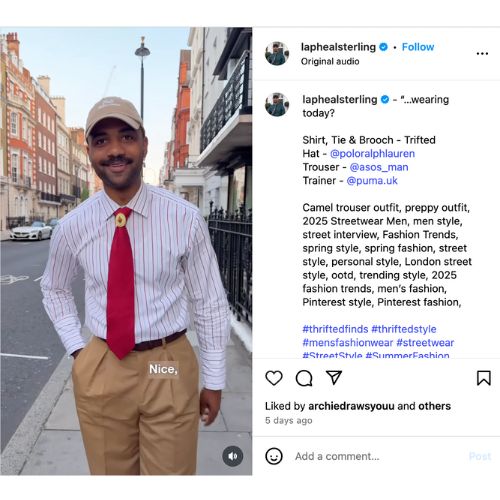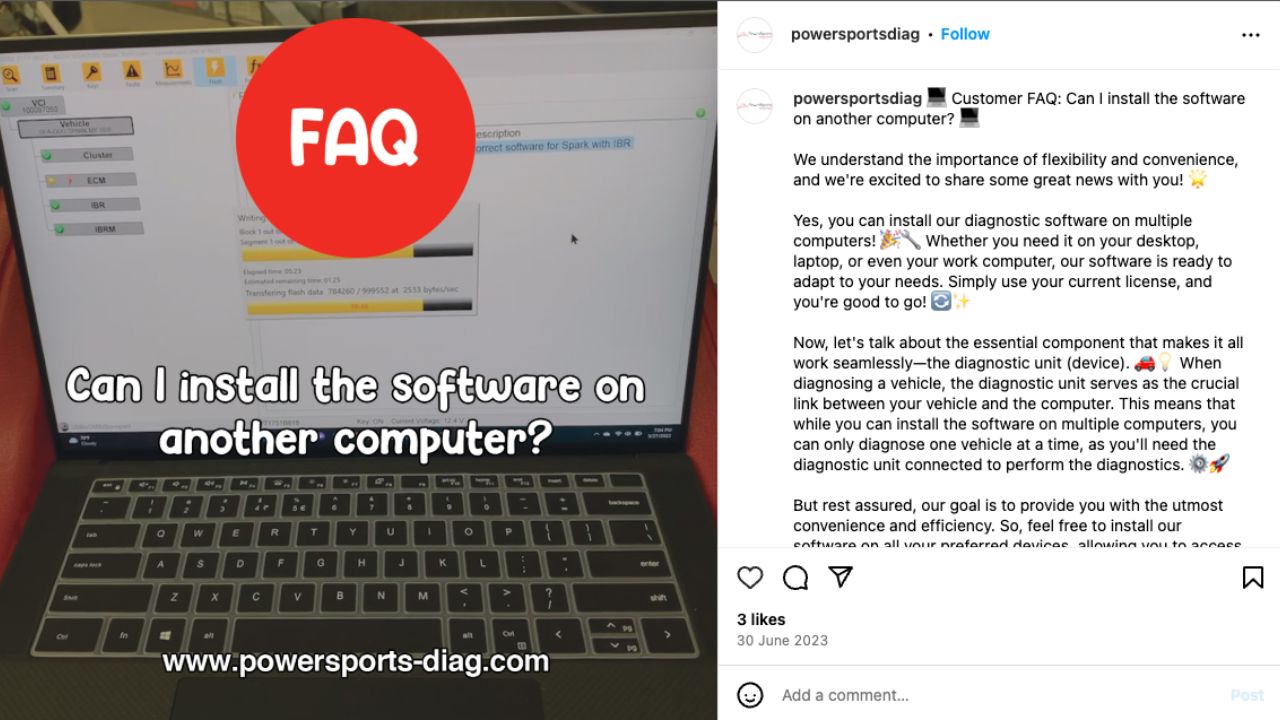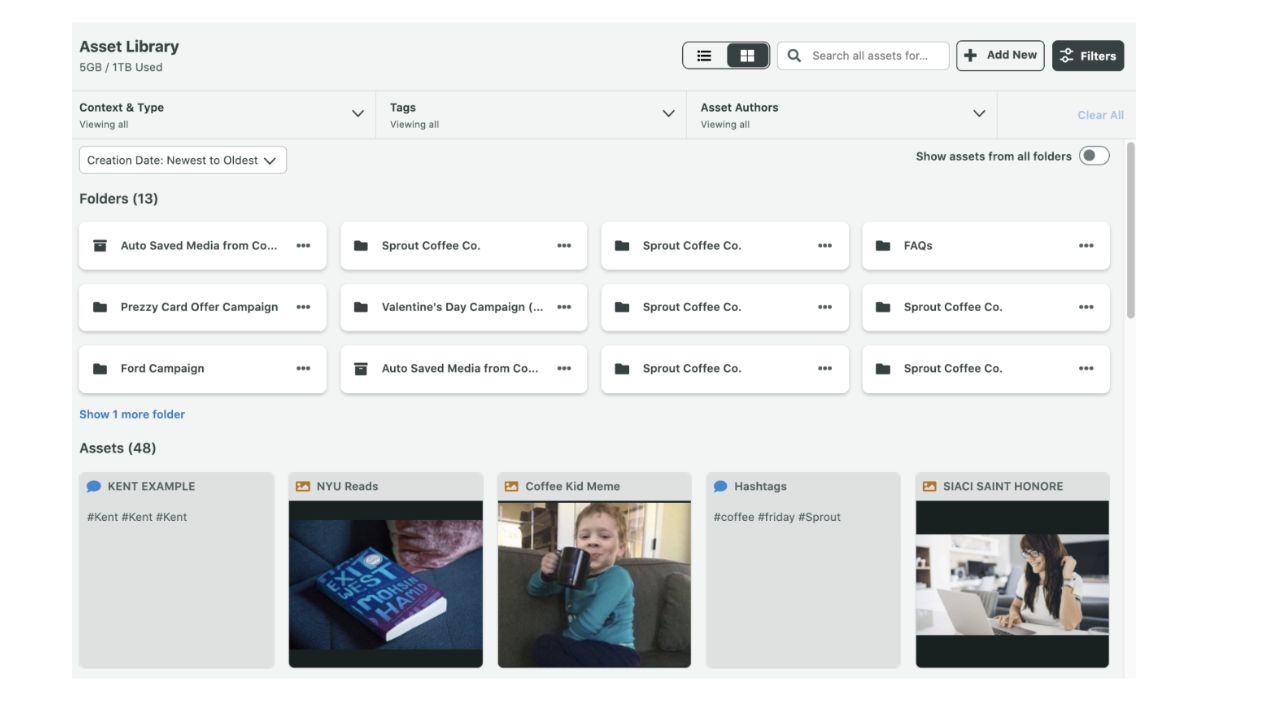How UK ecommerce brands are winning big with UGC

Table of Contents
User-generated content (UGC) provides a powerful tool for UK-based online retailers looking to build trust and drive sales.
In a market where British consumers value authenticity and peer recommendations, UGC acts as modern-day word of mouth—real people showcasing real experiences. It’s not just another content type. It’s social proof that boosts brand credibility and influences purchase decisions.
When used strategically, UGC can elevate your digital marketing, complement your branded content and help convert browsers into loyal customers.
Here’s how to harness UGC’s full potential for stronger results on social.
Why UGC works for ecommerce in the UK
Word of mouth has reigned supreme in marketing for centuries, and UGC brings it into the era of TikTok and Instagram. And it’s especially powerful in the UK.
According to Sprout Social’s Index UK, social media users value authenticity above all else.
For this reason, traditional advertising can provoke scepticism, even cynicism, from UK audiences. Research shows that 92% of British consumers trust user-generated content more than traditional advertising.
This is why user-generated content is fast becoming a go-to for smart marketers everywhere. It’s all about building trust.
Why it works is simple:
A social media user trusts an influencer → that influencer trusts your product → the social media user now trusts your product.
It’s authentic content that sidesteps the in-built British scepticism of branded content—social proof at its finest, especially as audiences are becoming fatigued with social media. Whether it’s a TikTok review, tagged posts on Instagram or even a Google Review, UGC is changing the face of ecommerce marketing in the UK. But what is it, exactly?
What counts as UGC (and what works best)
As UGC grows in popularity and features on social media platforms evolve, brands are leveraging different types of UGC.
TikTok try-ons and unboxings
It’s an enormously popular type of content in its own right, and smart ecommerce and retail brands are tapping it for their own influencer marketing efforts.
Source: Instagram
Instagram Reels and Stories
Take advantage of short clips of real customers using your products. They don’t need to be major content creators for this to be effective. You don’t even need to enter an agreement. It’s as simple as finding users who are using your products and tagging them (more on this later).
Source: Instagram
Customer reviews and testimonials
Testimonials have long been touted as the most powerful way to build trust. User-generated testimonials on social media are the latest and most powerful iteration of the customer testimonial.
Source: Instagram
Before-and-after images or videos
People love before-and-afters because they love seeing a transformation. It stands to reason that user-generated before-and-after content is an effective addition to your UGC strategy.
Source: Instagram
Customer FAQs turned into videos
Answering common questions through UGC adds value while keeping the tone human and engaging.
Source: Instagram
Duets or stitches reacting to your content
Inviting customers to respond to your brand on TikTok helps build a sense of community and playful interaction.
Source: TikTok
Where to source UGC from your UK customers
UGC can either be found or commissioned. Here are some of the clever ways brands are sourcing it.
Ask for reviews post-purchase
You can do this with an automated email. You’ll need to offer an incentive like a discount or a shoutout, so think of a feasible offer and make it clear what users will get in exchange for their reviews. Invite reviewers to send their proof of review over social media or email, so you have the link for future use.
Source: TikTok
Run Instagram contests
Creating a fun Instagram contest with cool prizes is a great way to commission creative UGC.
For example, a beauty brand might run a “most creative beauty hack” competition using its products. Contests are an easy way to commission loads of creative content at minimal cost and effort.
Collaborate with micro-influencers in the UK
Working with local influencers will involve a giveaway or a fee, but if their followers align with your target audience, it will be well worth it.
Sprout Social has put together a list of UK influencers from a range of niches to simplify your search.
Repost tagged stories (with permission)
Simply reposting tagged stories is the easiest way to get UGC. It’s best practice to ask permission (more on this later), but once you’ve been given the green light, be sure to repost it.
Use TikTok comment replies as content
Most people don’t think of social media comments as UGC, but they are. Be sure to save screenshots of comments on TikTok, Instagram or Facebook and use them in future social media content or elsewhere in your sales funnel (more on this later).
Monitor mentions via Sprout Listening
If you’re a medium-to large-sized ecommerce brand, the odds are you’re getting way more brand mentions than you’re aware of. With Sprout Listening, you can track keywords, brand mentions and relevant phrases across social platforms. This capability will help you uncover a treasure trove of UGC.
Use Smart Inbox and Listening tools
Sprout’s Smart Inbox pulls all your social interactions, mentions, comments, tags and UGC into one unified dashboard. Paired with Listening tools, you can filter by campaign, product or theme to spot trends, respond quickly and plug the right UGC into any stage of your ecommerce funnel.
How to use UGC across your ecommerce marketing funnel
The beauty of UGC is that it can have a life well beyond its original post.
With permission, one reel or post can be a reusable asset you can deploy at any point along your funnel.
Top of funnel
Simple brand-awareness-based UGC is a great way to get your brand in front of new audiences. Think reaction videos, testimonials, unboxings or try-ons—anything that captures an authentic experience customers are having with your products.
Mid-funnel
Past the awareness phase, UGC can help users understand the why of your products and really see the benefits. Mid-funnel prospects want to see evidence that others have had good experiences with your product. Customer reviews and reactions content offer a great way to scratch that itch.
Curate UGC reviews and put them into “Reasons why people love [your brand]” Reels. Another idea is to have your team react to customer UGC.
Bottom-funnel
66% of people from the UK base their purchase decisions on reviews and comments from other users. Leveraging UGC at the decision stage adds a dynamic edge that static reviews lack. Embed UGC in product detail pages (PDPs), sales pages and email campaigns.
It’s also a great idea to use UGC in abandoned cart flows and retargeting ads.
Seeing people use and love your product in real life helps build trust and nudges customers over the line.
UGC best practices for UK ecommerce brands
Always credit the creator
It could be as simple as a “thank you” and a tag, but credit is a must. It isn’t just the polite thing to do. Making contact with creators provides an incentive for the UGC creator to produce more content for you in the future.
Ask for permission before reposting
It’s unlikely that they’ll say no, but reposting without permission is a bad look. Shoot the creator a DM and say something like:
Hi [Creator’s Name]!
We came across your post featuring [Product Name] and absolutely loved it. Thank you for the shoutout! We’d love to share it with our community (with credit to you, of course).
Would it be okay for us to repost your content on our [Instagram/website/newsletter/etc.]?
Let us know, and keep up the amazing work! 🙌
[Your Brand Name] Team
Prioritise authenticity over polish
Commissioning highly polished UGC undermines what makes it effective in the first place. An overproduced piece of content will feel suspicious to UK audiences that prize authenticity above all else.
If you’re commissioning UGC, go easy on the directives. As the kids say, “let them cook”.
Work with local creators
If you’re working with influencers to produce UGC and you’re targeting the UK market, be sure to prioritise local creators. Subtleties in humour, local language and cultural references make content more relatable.
Keep a UGC library or content bank
As above, think of UGC as a reusable asset. Be sure to save links to UGC content for later use. Sprout’s Social’s Asset Library is perfect for the job. It allows you to tag and store content, including UGC, for later use.
Source: Sprout Social
Measure what matters: Track UGC ROI
Once you have permission to use UGC, you should treat it as your own asset. That means tracking and measuring. These steps will help you understand what works and optimise your future UGC strategy accordingly.
Track engagement, reach, CTRs and conversions from UGC posts
Monitor key metrics like engagement and reach. If you’re using UGC at the bottom of the funnel, monitor conversions.
Use Sprout’s custom tags to label and analyse UGC separately
With Sprout’s tagging system, you can create separate tags for “UGC” and “branded content” and then compare results. UGC may be more popular among some demographics and less among others. UGC may even be more popular, period.
A/B test UGC vs. branded content across platforms
Most people don’t think of running A/B tests between UGC and branded content, but that’s exactly what you should do. Post similar content to one of your UGC assets and compare engagement. You can also run A/B tests on PDPs between different UGC assets to determine which content is more appealing.
Monitor sentiment and response via Listening
With Sprout Social’s Listening tools, you can delve even deeper to find out how exactly people feel about your UGC or any other assets. Are they surprised or inspired? Do they find it amusing?
Whatever people are saying, Listening tools help you read the room.
Supercharge your UGC strategy with Sprout
UGC isn’t just another fad or a quick way to build awareness. It’s now an essential building block of any effective marketing campaign for UK ecommerce businesses.
It can be used and reused across any stage of your funnel, and you have endless ways to source it.
UGC offers a rich vein, but do you have the right tools to tap into it?
With powerful social media integrations—plus support for Facebook Shop and Shopify—Sprout Social is the link between social content and ecommerce growth.
Want to turn customer stories into ecommerce growth? Try Sprout free for 30 days and see how our platform helps UK brands scale trust, content and conversions.










Share